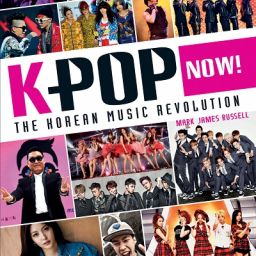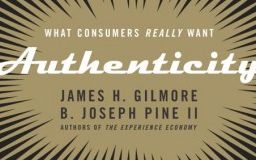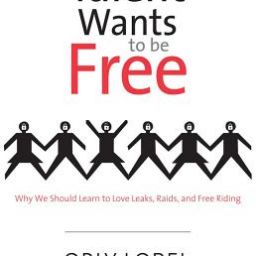by Raizel Liebler
Assuming you are someone who is a creator, rights of publicity likely effect what you do, even if you aren’t aware of it. If you are in the U.S., you may think that the First Amendment protects you, but right of publicity lawsuits are frequently routinely brought over lots of different types of things that seem like they would be automatically acceptable without question as news, entertainment, or art. Lawsuits are often filed against books, films, songs, paintings and prints (including on T-shirts or greeting cards), and video games that mention someone’s name, likeness, or other attributes of identity. This is true for both fictional – and non-fiction works – and when the person is used in the creative work in both a true-to-real-life (golfer golfing), non-realistic (half-worm creature), or combo (hockey player reinterpreted as a mobster) format. Or even name-dropping in songs.
In the recently appealed to the Supreme Court case from the Ninth Circuit, NCAA v. O’Bannon, No. 15-1388, where most of the focus has been on antitrust issues – and the rights of student athletes to be paid something for their labor, there has been much less focus on the rights of publicity issues. Recently, I signed on to an amicus brief in because the Supreme Court needs to intercede in the continual conflict between the right of publicity and the First Amendment.
I didn’t write the brief, but by signing on, I agree to the arguments in the brief written by Jennifer Rothman and Eugene Volokh, regarding the issue of “Whether the First Amendment protects a speaker against a state-law right-of-publicity claim based on the realistic portrayal of a person in an expressive work (here, a student-athlete in a college sports videogame).”
So what is the right of publicity?
The most respected ongoing updated book on this area of law, McCarthy on Rights of Publicity and Privacy describes the right of publicity as “a right inherent to everyone to control the commercial use of identity and persona.” But presently defining what is “commercial” and the tests for acceptable use aren’t clear, leading to confusion for those that want to use real people potentially within their creative works.
Why is this?
State law, rather than federal law, governs the right of publicity. In a nationally integrated economy, where goods are routinely sold nationwide, a use of a person’s identity in everything from true commercial products through recognizably creative works creates a potential problem state-by-state.
Some states allow for the right of publicity to outlast someone’s life, meaning that potentially long after someone is dead, someone out there might sue creators about the inclusion of a real person within a work. This was the case in the proposed Prince law in Minnesota.
So does this have impact on creative works that I’m interested in? Video games or music, especially merch?
As my co-author and I wrote in Games are Not Coffee Mugs, 29 Santa Clara Computer & High Tech. L.J. 1 (2012), rights of publicity laws have an impact on how real people from history are used by others:
[John] Dillinger, who is referenced in several games [] is notable not only because he is covered by the Indiana statute through 2034, but because Dillinger’s estate [] actively seeks to enforce his post-mortem right of publicity.
John Dillinger continues to serve as a character in many expressive works and even serves as an inspiration for the names of several artists. For example, there are three bands with the name Dillinger: a Canadian hard rock band and two more well-known bands, the punk band Dillinger Four and the metalcore/mathcore band The Dillinger Escape Plan. Additionally, an arrest photograph for John Dillinger serves as the publicity photo for the [] single Public Enemy #1 by Megadeth (2012).
So … that real person fanfic t-shirt/merch kinda maybe might be illegal? Or if I put a photo of someone famous on the cover of my book – even if it is about them?
Yup and yup.
Why are things so confusing?
As the brief states, right now “lower courts now use five different First Amendment tests in right of publicity cases … These different tests often lead to inconsistent results, which leave creators and publishers uncertain about what they may say.”
This can’t possibly impact stuff beyond video games, right?
As the brief states,
“Though this case involves video games, the logic of the Ninth Circuit precedents on which it relies equally applies to other media, such as books and movies. Indeed, Doe v. TCI shows that the right of publicity jeopardizes books. (There is no First Amendment distinction between comic books and novels.) Plaintiffs routinely sue over the use of their names, likenesses, and biographical details in books and films.”
“Of course, maybe Keller would not really be extended to books or films, because courts would treat those media as favored under the First Amendment, while other media – video games, comic books, humorous cards, prints, T-shirts – would be treated as disfavored.”
Wait – so now there is a patchwork of different laws about the use of real people in creative works based on both location and possibly also based on some works being considered to have greater First Amendment coverage?
Yes – and this is why the brief was written. At present, it is virtually impossible to be certain in the U.S. that selling any creative work based in part on real people won’t violate someone’s right of publicity. As the brief concludes: “Such lack of uniformity endangers free speech, and the creative industries that depend on the First Amendment’s guarantees.”
“This uncertainty is especially dangerous for smaller authors and publishers that lack the money to litigate such cases (even when their First Amendment defense is very strong). Many such small speakers are likely to be chilled into following the most restrictive standards, and the most restrictive interpretations of those (often vague) standards. If this situation is left uncorrected by this Court, a wide range of expression in movies, plays, novels, songs, video games, documentaries and more will be deterred.”
Does this mean that the Supreme Court will decide this issue?
The Supreme Court could take this case, yet limit the scope to the antitrust and payment issues, thereby not even touching the right of publicity issue.
So when was the last time the Supreme Court decided a rights of publicity case?
The Supreme Court has only directly addressed rights of publicity once – in Zacchini v. Scripps-Howard, 433 U.S. 562 (1977).
When will we know what the result is?
If the Supreme Court doesn’t accept the cert petition to decide the case, things will be left as is, with different rules across the country. But if the Court does take the case, hopefully some time within a year-ish (assuming that the Court takes the case and rules specifically on the right of publicity issue).
Where can I get updates on this?
I’ll be posting more about this – but the best publicly available place to learn more about rights of publicity specifically is Jennifer Rothman’s Rights of Publicity website!






